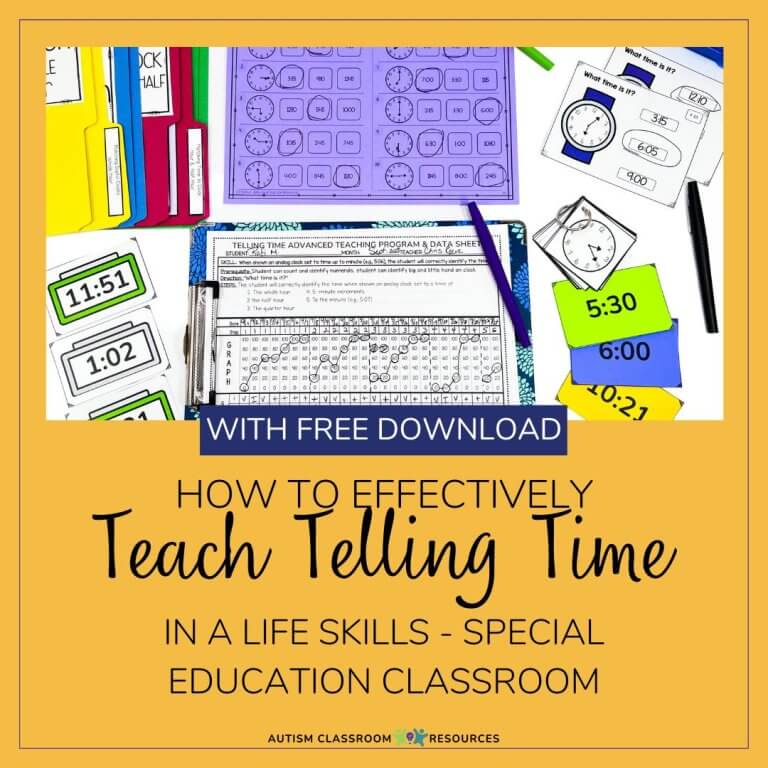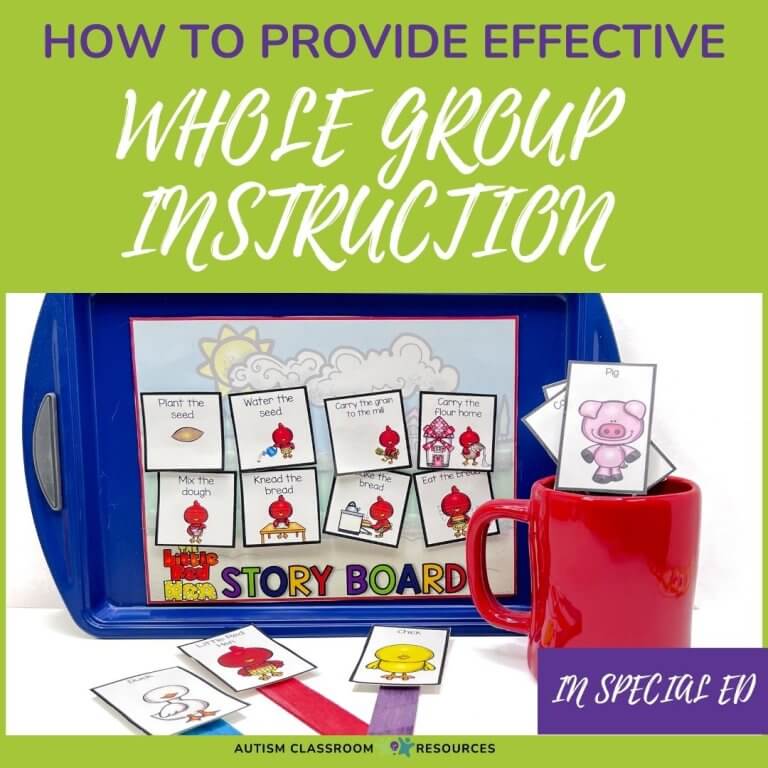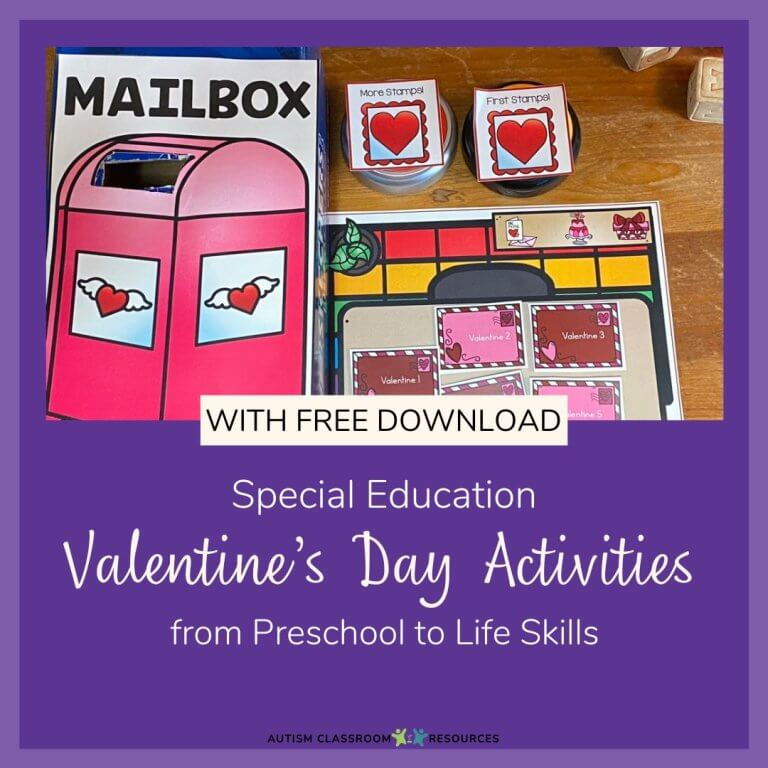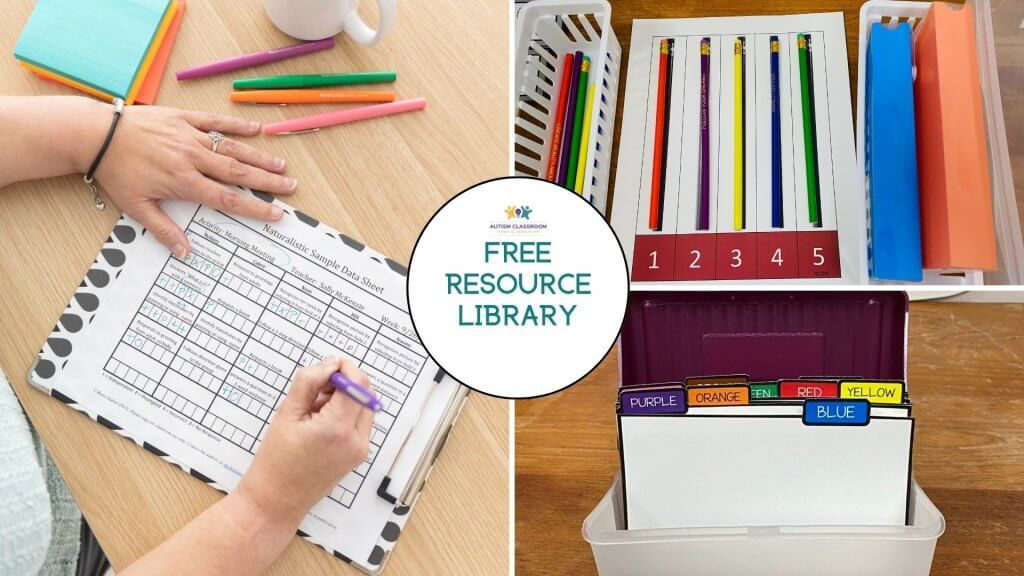Sharing is caring!
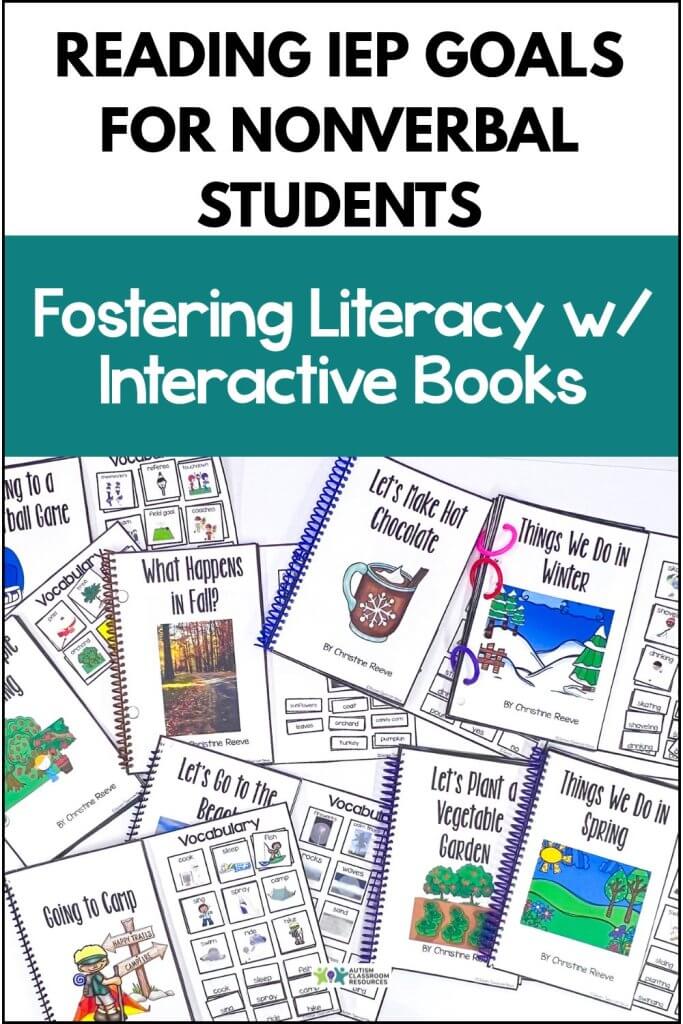
I know many teachers struggle trying to think of reading IEP goals for nonverbal students and students with significant disabilities. Many think that students who are nonverbal aren’t going to be able to read. But that isn’t the case. In fact, there are specific beginning skills that nonverbal students can learn that foster the use of print–or literacy.
Summary:
This post shares some reading IEP goals for nonverbal students and strategies for fostering literacy for these students using interactive and adapted books. The beginnings of literacy and teaching literacy to nonverbal students and students with significant disabilities is reviewed. Reasons for adopting interactive and/or adapted books are shared. And IEP and objective goals focusing on early literacy skills are provided. Additional considerations like easy ways to take data on the goals is included.
Table of Contents
I’ve talked about interactive or adapted books before as ways to improve augmentative communication. They are really good for us modeling using AAC with them. I’ve also focused on using them to teach receptive vocabulary. But literacy is something that we don’t pay enough attention to, especially with many of our students on alternate curricula.

The Beginnings of Literacy
In order to teach some students to access literacy, we need to think about tracing the skills back to the beginnings. The beginnings of literacy skills are learning how to use books, follow along with books, and fostering interest in books. These skills start pretty basic and stop short of getting into reading goals, which I think people are often more familiar with writing.
When we go to write the reading IEP goals for nonverbal students or students with significant disabilities, we need to think back to how we can start to get them interested in books. So, if we think back to our developmental skills or even our own childhood, before we could read, most of us interacted with print materials (or for some maybe online literature) in some way.
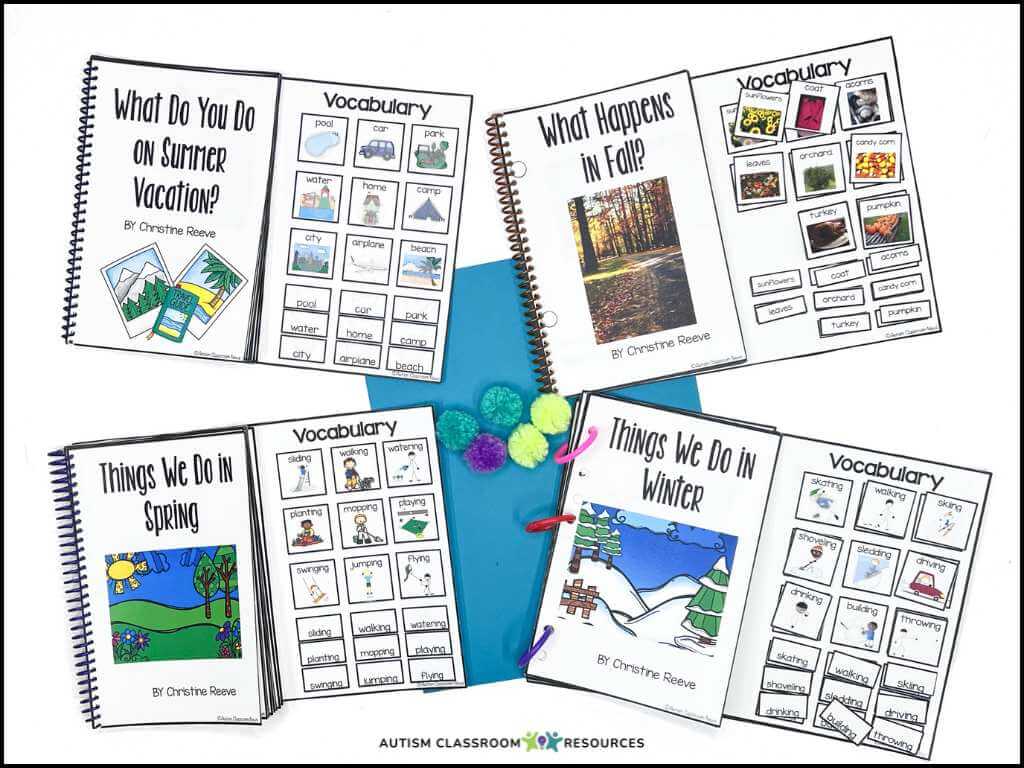
Someone read to us or shared a book with us. And during that time, someone might have pointed to the words as they were read. They might ask the child to point to the pictures in the book. Or even ask the child to turn the page when the text for that page had been read. These are the beginnings of literacy. This is what got us interested (more for some of us, less for others) in literature.
Literacy for Nonverbal Students
Students who are nonverbal aren’t that different than children who speak. They can interact with reading materials in the same way when they are young. However, when a child is nonverbal or has significant disabilities, often we forget that they can still experience materials and interactions in the same way. Or their interest or engagement levels might be developmentally behind other children their age. So in that case, they sometimes miss out on these experience. And when we go to write IEP goals for nonverbal students and those with significant disabilities, we think it has to be complicated.

The key to building literacy at this stage is getting the student interested in interacting with the literature. We have to find a way to engage them and make sure that they can understand the material we are sharing. At this point, they don’t need to read the material, but matching pictures, participation in reading, turning pages, and other behaviors might be the beginnings of literacy for these students. These are skills we can build on to get to reading.
Why Interactive or Adapted Books for Teaching Reading for These Students?
As I noted, some of the early skills we work on for students who are nonverbal or need more directive intensive instruction in early literacy skills, involve getting the student engaged with the material. They have to be interested and want to interact with the material. And it needs to be presented at their level.
Interactive and / or adapted books can be the answer to get students engaged. They are called interactive books specifically because they encourage physical interaction on the part of the student. Sometimes this is to match a picture, sometimes it’s just putting a picture on a page regardless of the picture, sometimes it’s turning the page.
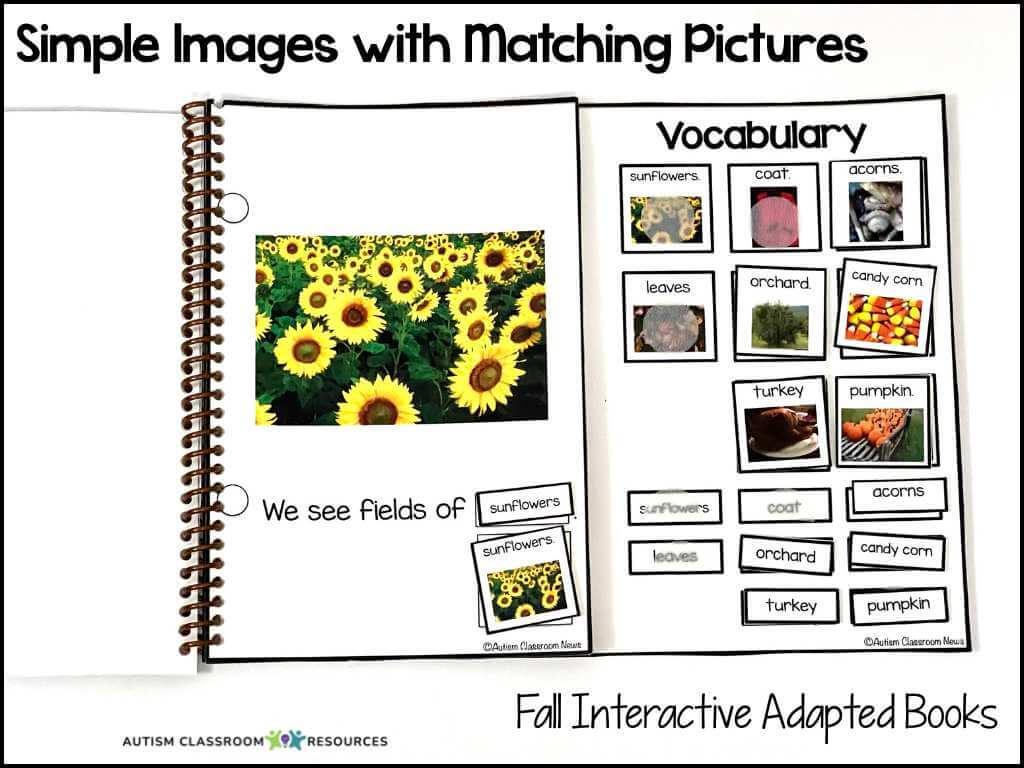
Interactive or adapted books are also typically highly simplified. Each page may have only 1 sentence. And some of the vocabulary is presented in picture form in addition to the word.
This makes comprehension easier and also makes the materials more accessible in the sense of allowing the student to access print without being verbal. But it also makes the material accessible in that it’s easy for the student to manipulate and play with.
Plus, using adapted / interactive books allows us to break skills down into small segments, which can helpful for the learning process.
Reading IEP Goals for Nonverbal Students or Those Who Need Pre-reading Skills
Based on this premise, below are examples of reading IEP goals for nonverbal students and those with significant disabilities. There is an example of a goal that could include the skills that follow as objectives. Or those listed under objectives could be also be goals and broken down more finely. And, as always, you should adjust accordingly for your students.
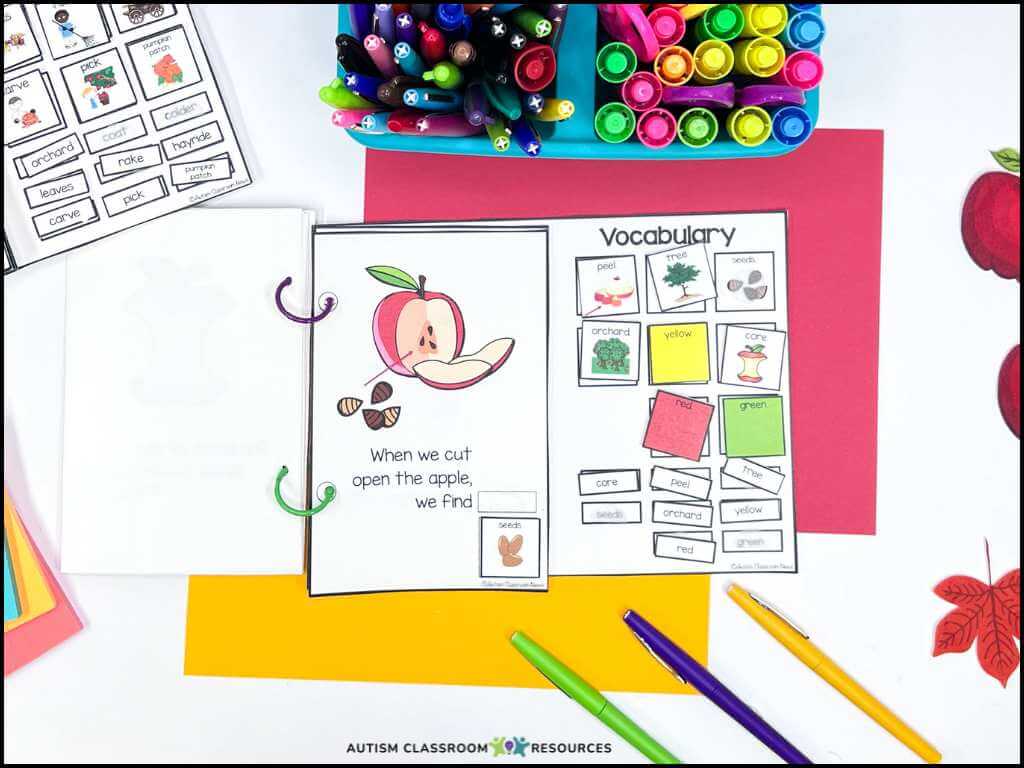
GOAL: Given visual supports within the book, Sue will remain in the area listening to a story read by the teacher for at least 5 minutes, point to/ identify/ state with AAC the title and author of the book, and select pictures related to the content of the book for 4/5 books read.
Other goals or objectives
- Given visual supports within the book, Sue will locate the cover of the book and point to (or identify or state with AAC depending on your student) the title of the book [add prompting here if needed] for 4/5 books read.
- Given visual supports within the book, Sue will locate and identify (by pointing, saying it with AAC) the author of the book for 4/5 books read.
- Sue will turn pages of a book as it is read to her independently when the adult pauses at the end of reading the text on 4/5 pages read.
- Given visual supports within the book, Sue will identify 5 pictures that belong in the book when given a picture from the book and a picture not from the book on 4/5 opportunities.
- Given a pointer or a pen or pencil, Sue will follow along with a story read to her by pointing to the text as it is read on 4/5 pages read. [You could also project a book on a projector or interactive whiteboard for the student to follow along with a pointer.]
- Given visual choices, Sue will identify at least 1 (or 2 or 3) characters in a book that is read to her with 80% accuracy (or 4/5 books).
Considerations in the Reading IEP Goals for Nonverbal Students Above
The goals above are designed to spark ideas of what would work for your students. However, I wrote them in a way that you could easily use a checklist when reading a book to take data (checklist might have title, author, and characters on it and you check off if she gets them correct).
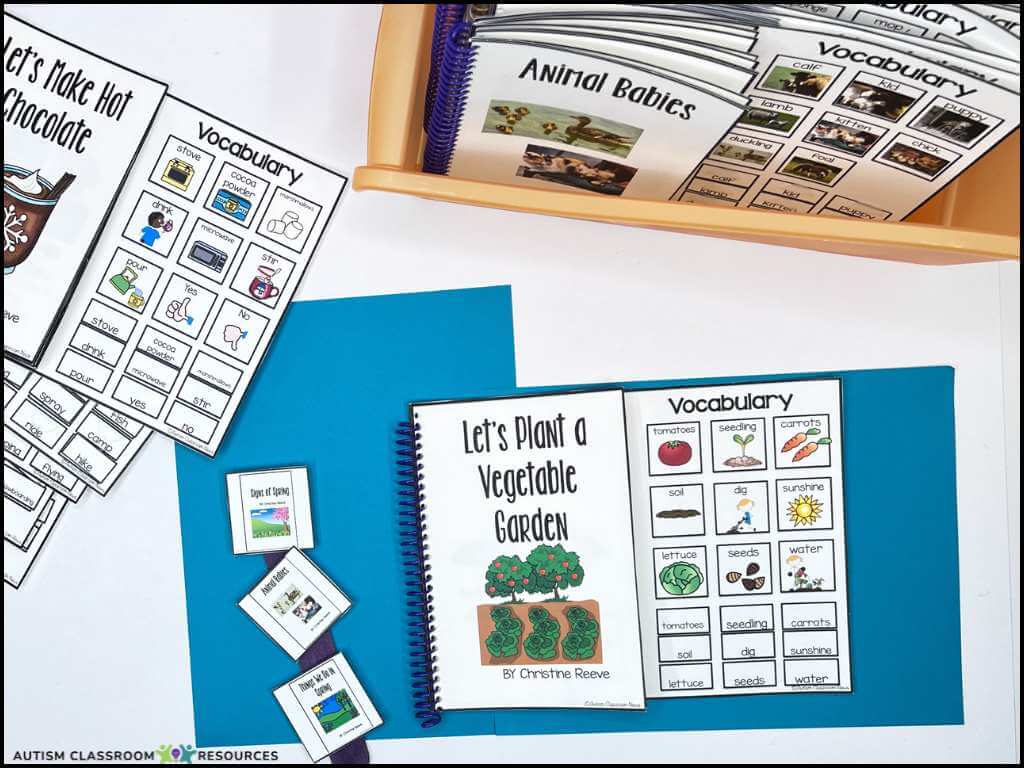
I also tried to make the mastery criteria easy to track by making it 4/5 books if I could because some of these activities would only happen once per book (e.g., identify title).
And of course there are different methods of interacting with the book and giving information that would depend on your students. You could easily incorporate AAC or other assistive technology into the goals as well (e.g., will hit a switch to ask the reader to turn the page).
Interactive Books for These Reading IEP Goals
The interactive books pictured in this post are designed to teach vocabulary, but also work well for these literacy-building activities and this level of learning. Just leave the word cards in place and have them move the pictures.
I hope these goals are helpful for your students. The first step is to choose a book or books and start interacting with the student.
Looking for Interactive or Adapted Books to Work with Your Students?
Seasons Interactive Books
-
Sale!
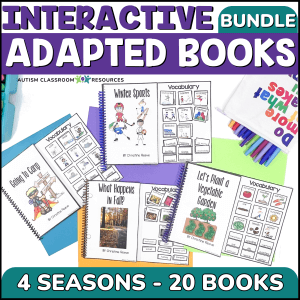
Adapted Books for Special Education – 20 Seasonal Interactive Adaptive Books
$32.00Original price was: $32.00.$25.60Current price is: $25.60. Add to cart -
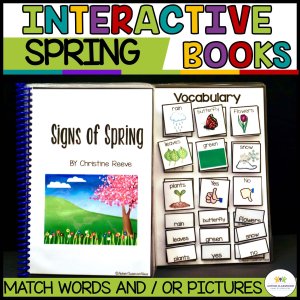
Spring Interactive Books – Vocabulary Practice for Early Childhood & Special Ed.
$8.00 Add to cart -

Interactive Adapted Books w- Winter Themes & Vocabulary for Special Ed & Autism
$8.00 Add to cart -
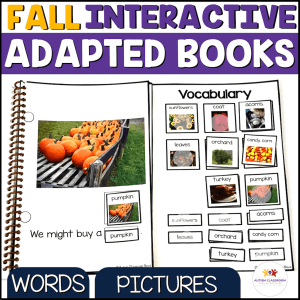
Fall Interactive Books for Special Education – Adapted Vocabulary Books
$8.00 Add to cart -

Summer Interactive Adapted Books for Special Education and Autism
$7.50 Add to cart
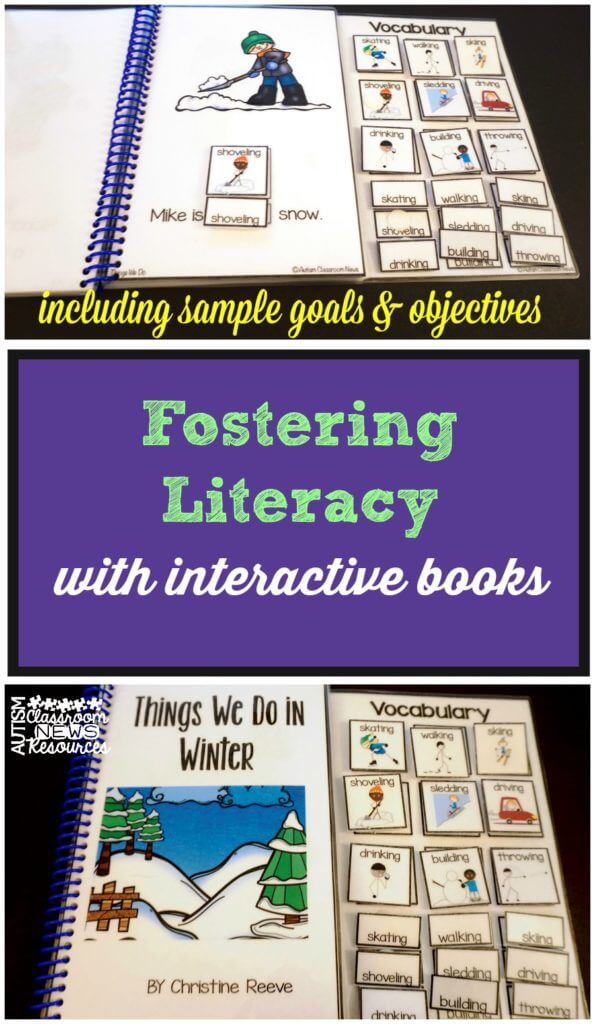

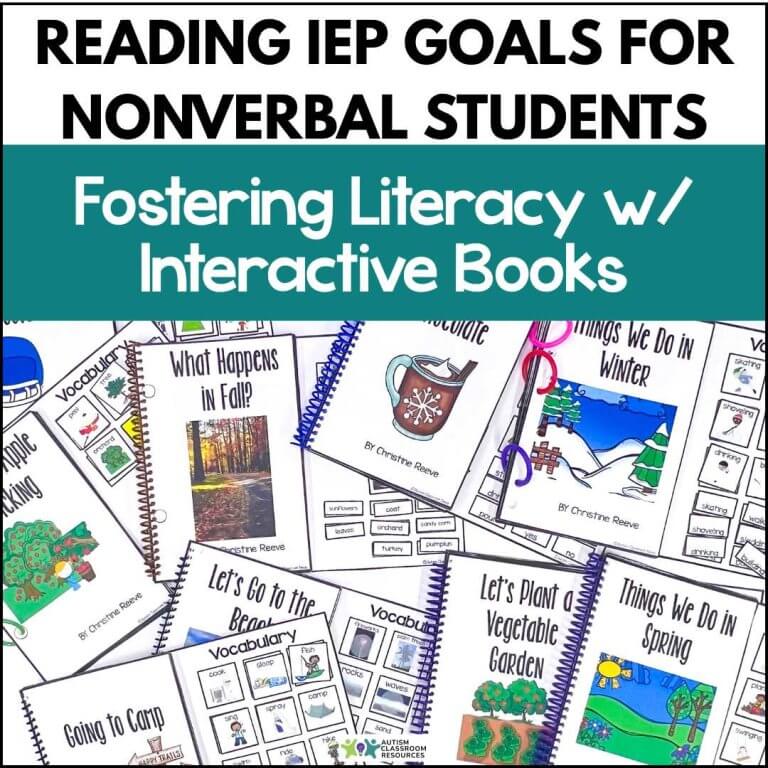
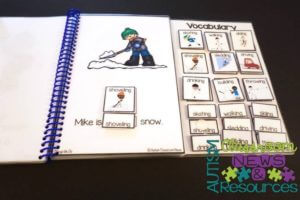
![Summer resources to help survive the end of the year in special education [picture-interactive books with summer themes]](https://autismclassroomresources.com/wp-content/uploads/2018/05/SUMMER-RESOURCES-ROUNDUP-FEATURE-8528-768x768.jpg)
